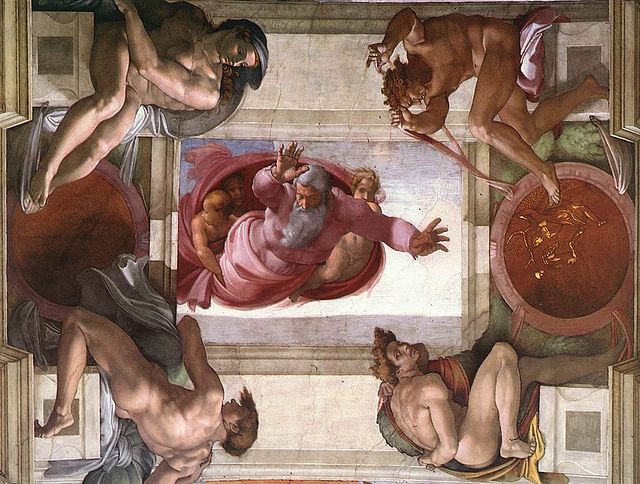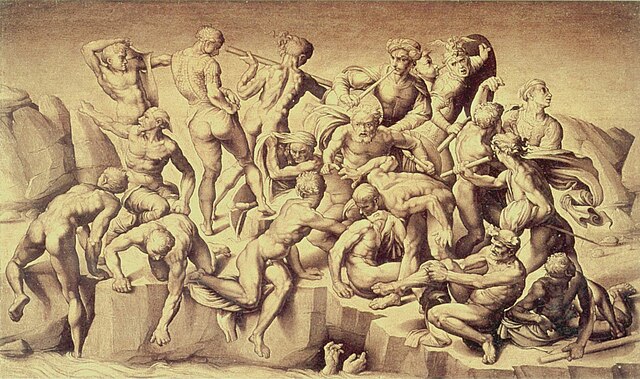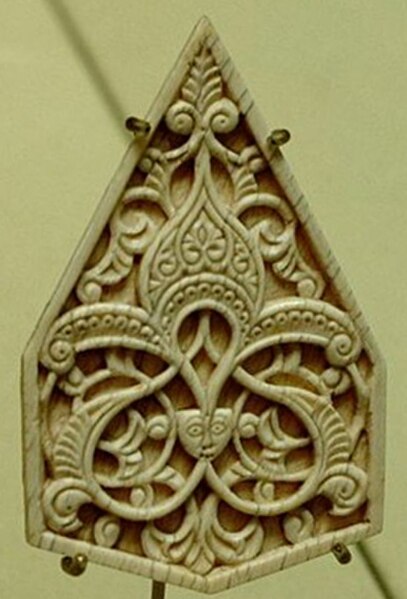Mannerism is a style in European art that emerged in the later years of the Italian High Renaissance around 1520, spreading by about 1530 and lasting until about the end of the 16th century in Italy, when the Baroque style largely replaced it. Northern Mannerism continued into the early 17th century.
In Parmigianino's Madonna with the Long Neck (1534–1540), Mannerism makes itself known by elongated proportions, highly stylized poses, and lack of clear perspective.
Mannerism role-model: Laocoön and His Sons, an ancient sculpture, rediscovered in 1506; now in the Vatican Museums. The artists of Mannerism greatly admired this piece of sculpture.
Collected figures, ignudi, from Michelangelo's Sistine Chapel ceiling
Copy after lost original, Michelangelo's Battaglia di Cascina, by Bastiano da Sangallo, originally intended by Michelangelo to compete with Leonardo's entry for the same commission
In the visual arts, style is a "... distinctive manner which permits the grouping of works into related categories" or "... any distinctive, and therefore recognizable, way in which an act is performed or an artifact made or ought to be performed and made". Style refers to the visual appearance of a work of art that relates to other works with similar aesthetic roots, by the same artist, or from the same period, training, location, "school", art movement or archaeological culture: "The notion of style has long been historian's principal mode of classifying works of art".
La Vie by Pablo Picasso, 1903; falling under the "style label" of Picasso's Blue Period
Les Demoiselles d'Avignon (1907), also by Picasso in a different style ("Picasso's African Period") four years later
14th-century Islamic ornament in ivory, centred on a palmette; Alois Riegl's Stilfragen (1893) traced the evolution and transmission of such motifs.
Georges Seurat's very individual technique and style, Le Chahut, 1889–90








